An alternating current of rms value 10 A is passed through a 12Ω resistor. The maximum potential difference across the resistor is
20 V
90 V
169.68 V
None of these
The correct Answer is:C
To find the maximum potential difference across a resistor when an alternating current (AC) flows through it, we can follow these steps:
1. Identify the given values:
- RMS current (Irms) = 10 A
- Resistance (R) = 12 Ω
2. Calculate the maximum current (I0):
The relationship between the RMS current and the maximum current is given by:
Irms=I0√2
Rearranging this formula to find I0:
I0=Irms×√2
Substituting the given RMS current:
I0=10A×√2
I0=10√2A
3. Calculate the maximum potential difference (V0):
The maximum potential difference across the resistor can be calculated using Ohm's law:
V0=I0×R
Substituting the values we found:
V0=(10√2)×12
V0=120√2V
4. Calculate the numerical value of V0:
Now, we need to compute 120√2:
V0≈120×1.414≈169.68V
5. Conclusion:
The maximum potential difference across the resistor is approximately 169.68V.
Final Answer:
The maximum potential difference across the resistor is 169.68V.
---
- RMS current (Irms) = 10 A
- Resistance (R) = 12 Ω
The relationship between the RMS current and the maximum current is given by:
Irms=I0√2
Rearranging this formula to find I0:
I0=Irms×√2
Substituting the given RMS current:
I0=10A×√2
I0=10√2A
The maximum potential difference across the resistor can be calculated using Ohm's law:
V0=I0×R
Substituting the values we found:
V0=(10√2)×12
V0=120√2V
Now, we need to compute 120√2:
V0≈120×1.414≈169.68V
The maximum potential difference across the resistor is approximately 169.68V.
The maximum potential difference across the resistor is 169.68V.
Similar Questions
The potential drop across the 3Ω resistor is
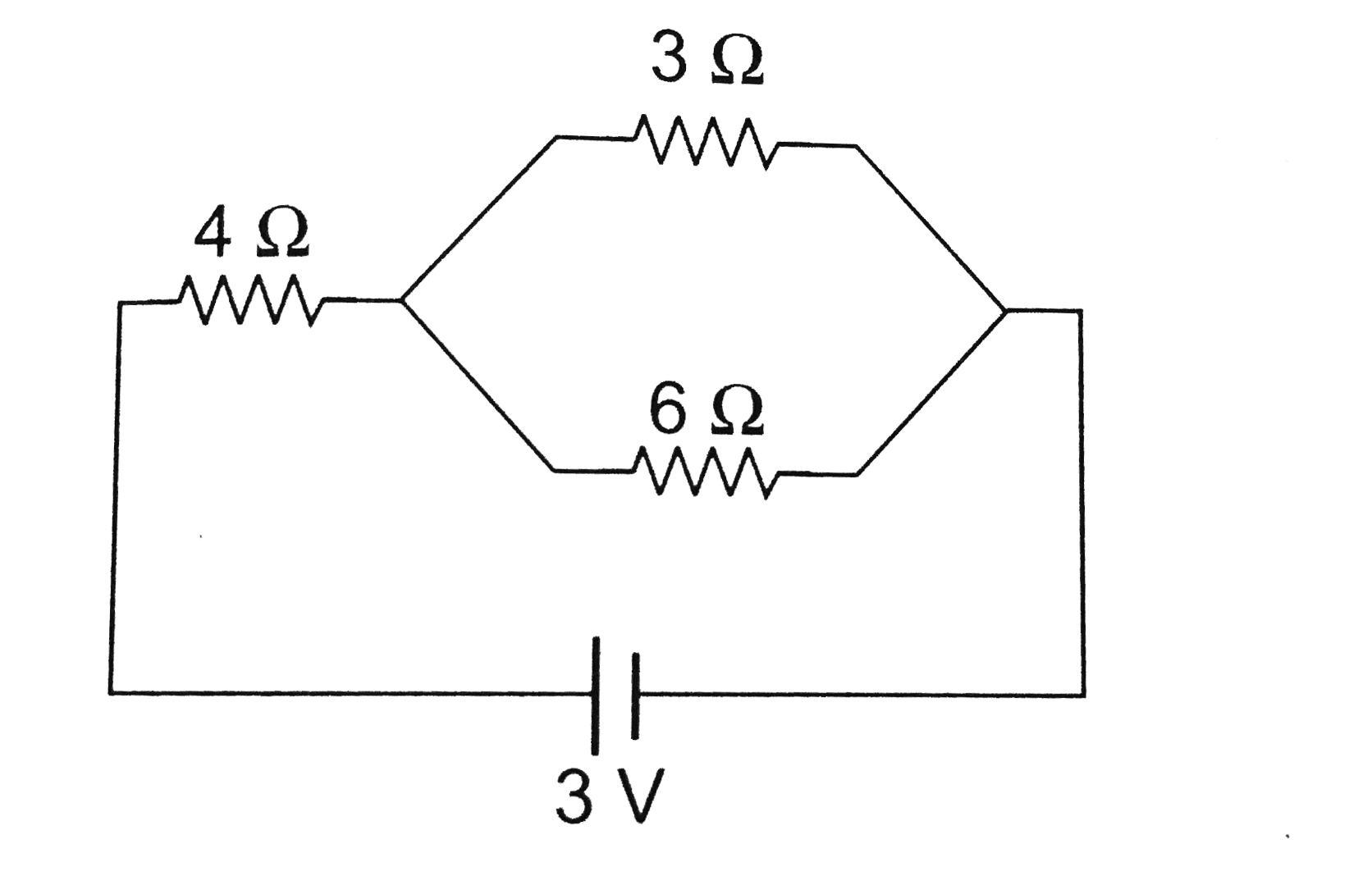
View SolutionCurrent through the 5Ω resistor is
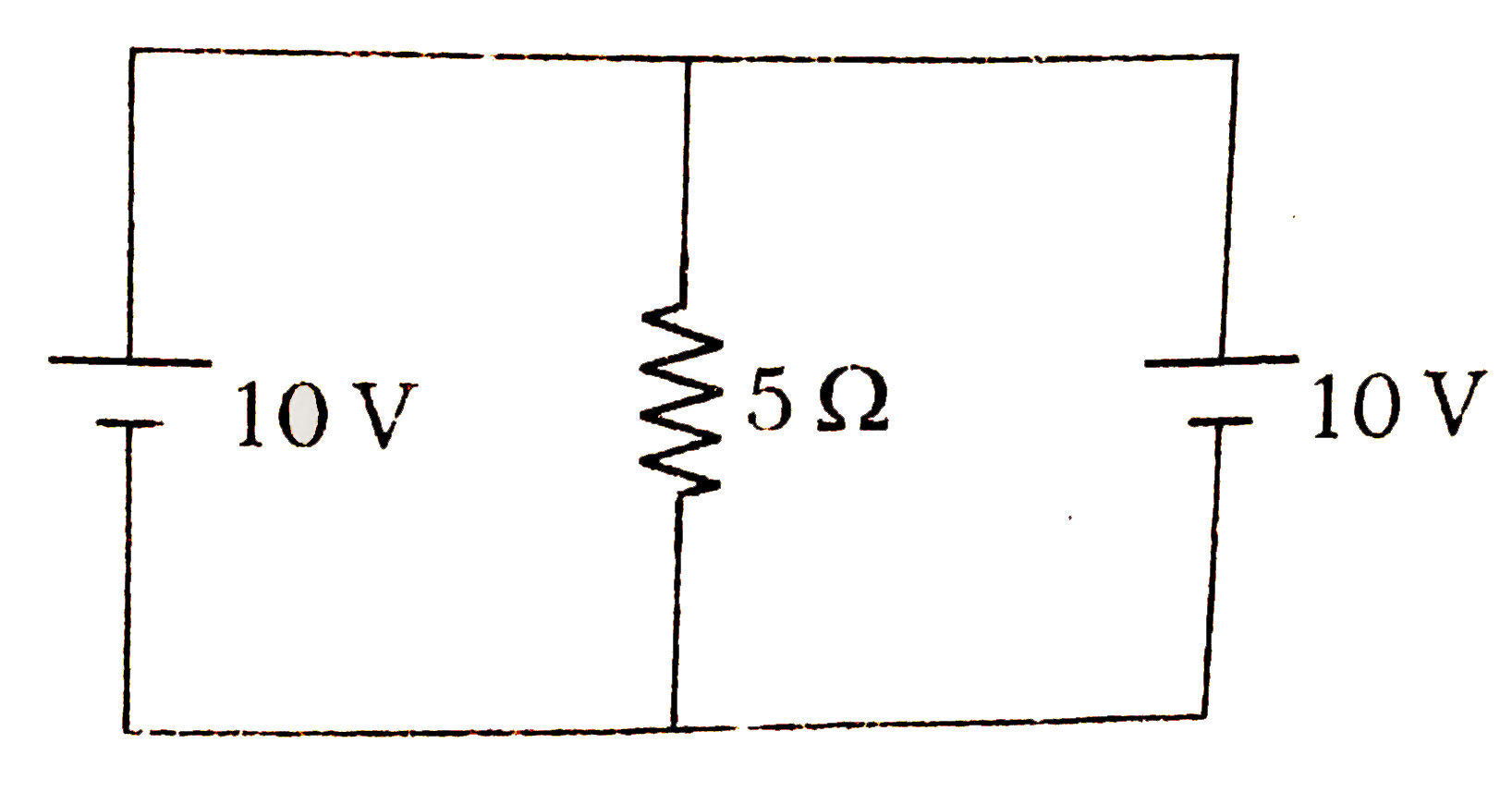
View SolutionCurrent through 3Ω resistor is 0.8A, then potential drop through 4Ω resistor is
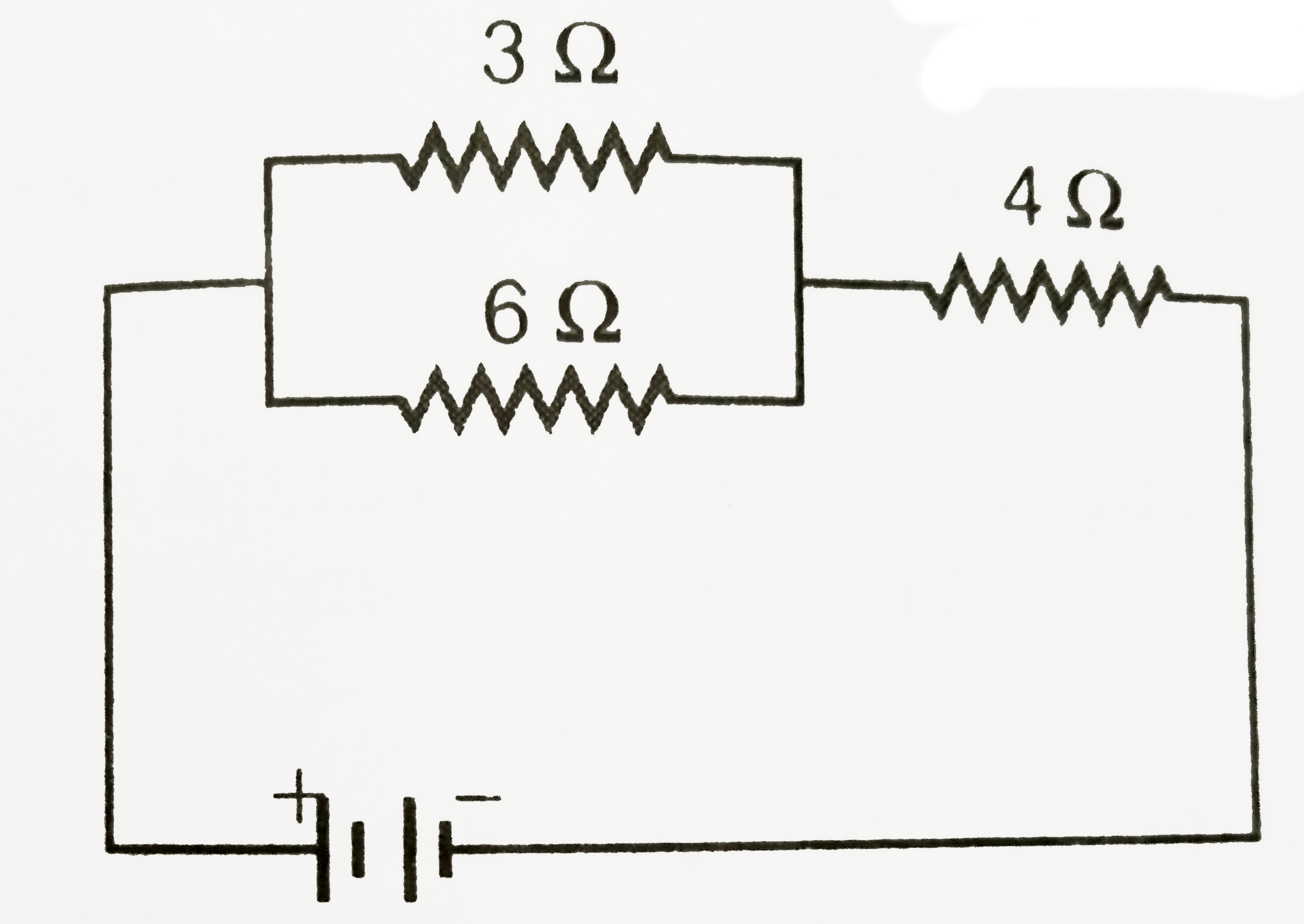
View SolutionCurrent through 3Ω resistor is 0.8A, then potential drop through 4Ω resistor is

View SolutionThe value of current through 2Ω resistor is
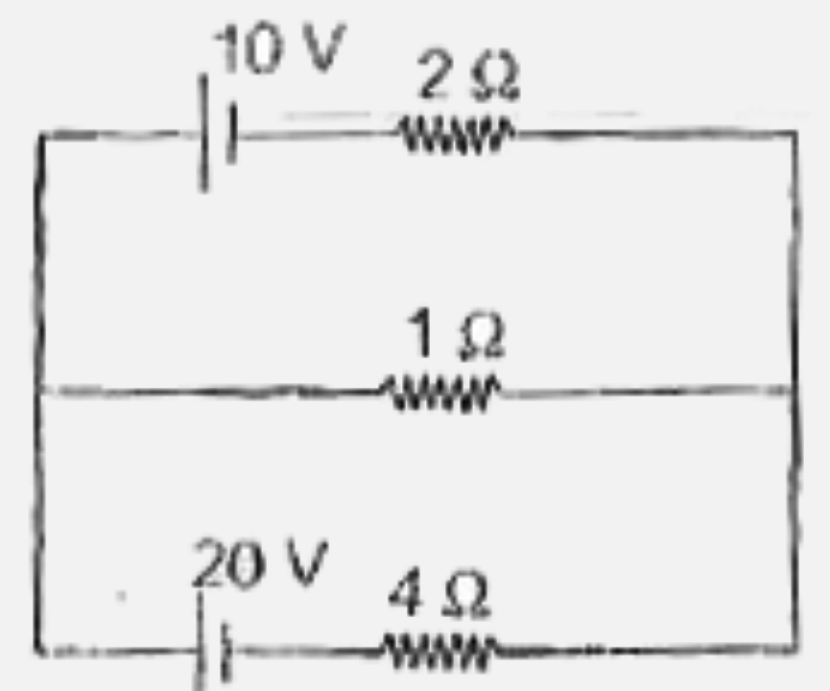
View Solution100J of heat are produced each second in a 4Ω resistance. Find the potential difference across the resistor.
View SolutionFind the current through 12Ω resistor in

View SolutionThe current through the 5Ω resistor is
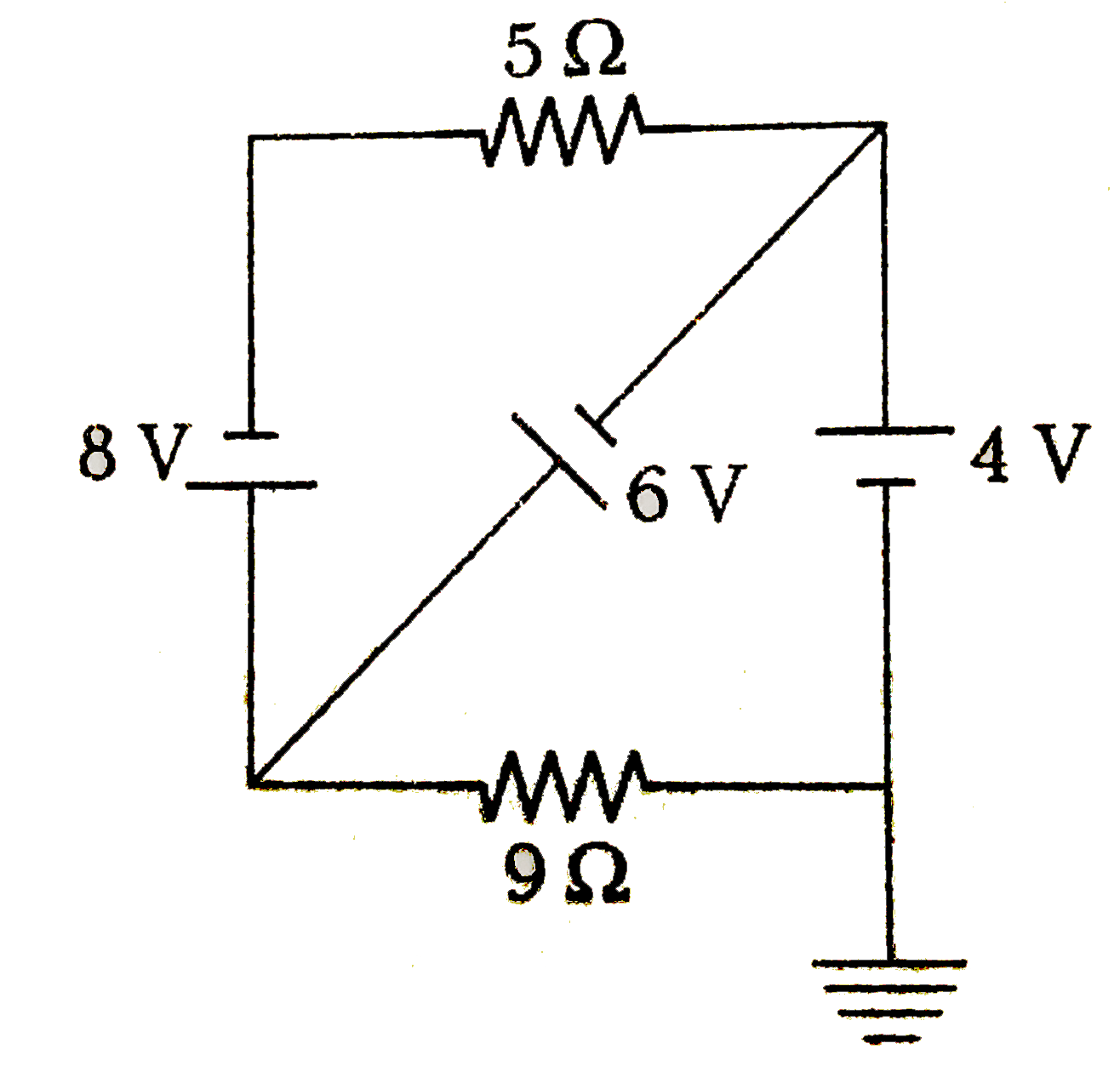
View SolutionIf power dissipated in the 9Ω resistor in the resistor shown is 36W, the potential difference across the 2Ω resistor is

View SolutionFind out the folowing in the electric circuit given in (Fig. 3.48).
(a) Effective resistance of two 8Ω resistors in the combination
(b) Current flowing through 4Ω resistor
( c) Potential difference across 4Ω resistance
(d) Power dissipated in 4Ω resistor
(e) Difference in ammeter readings, if any.
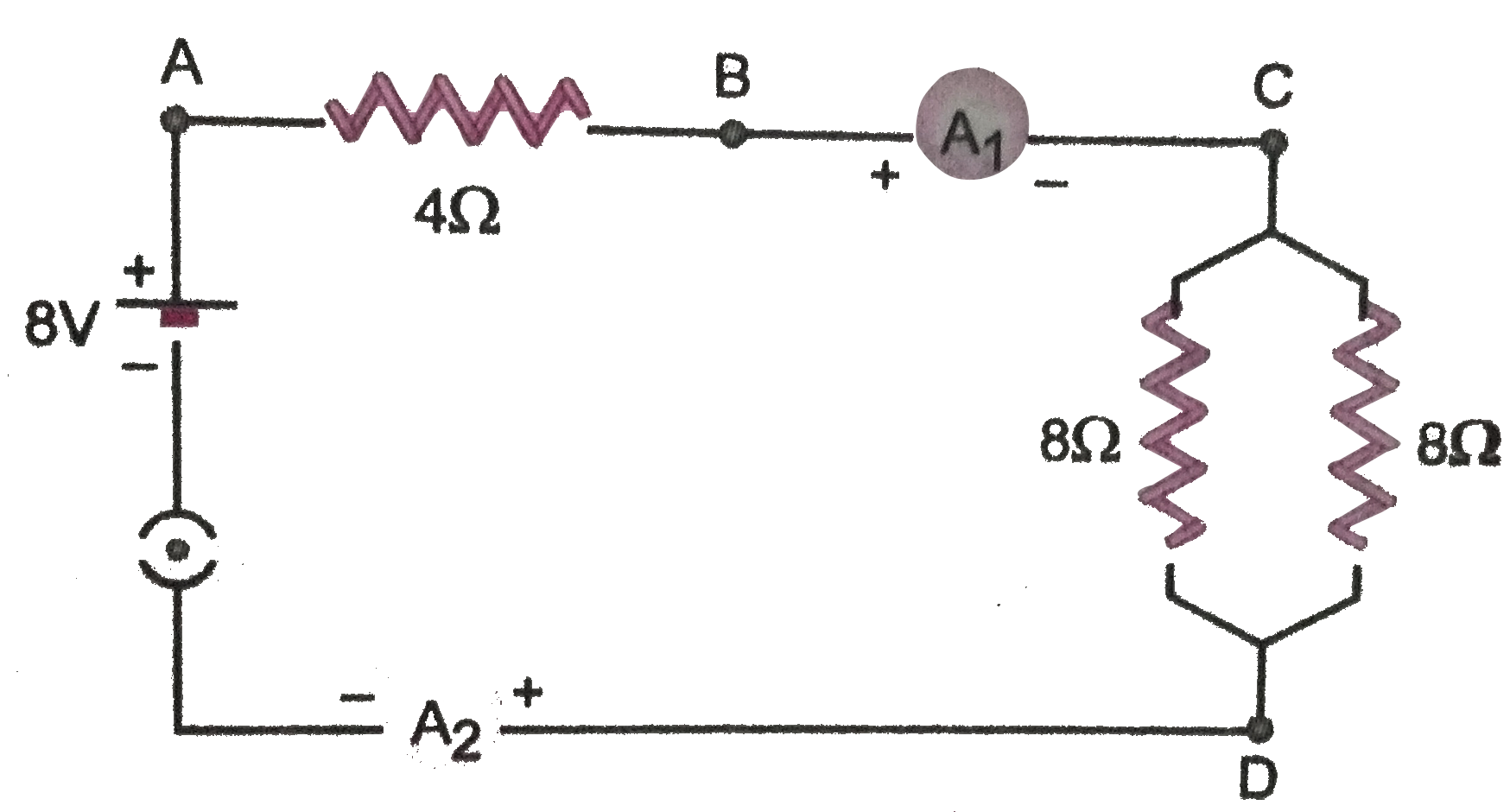 .
.
View Solution
